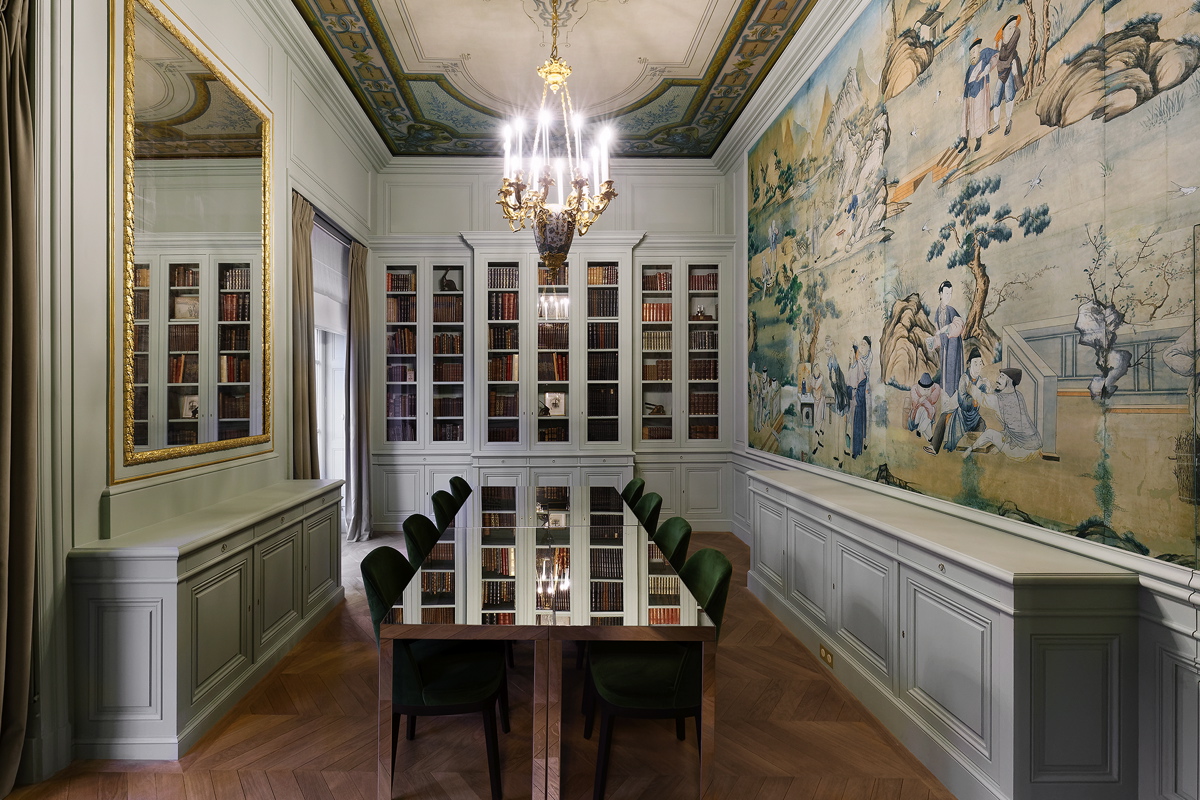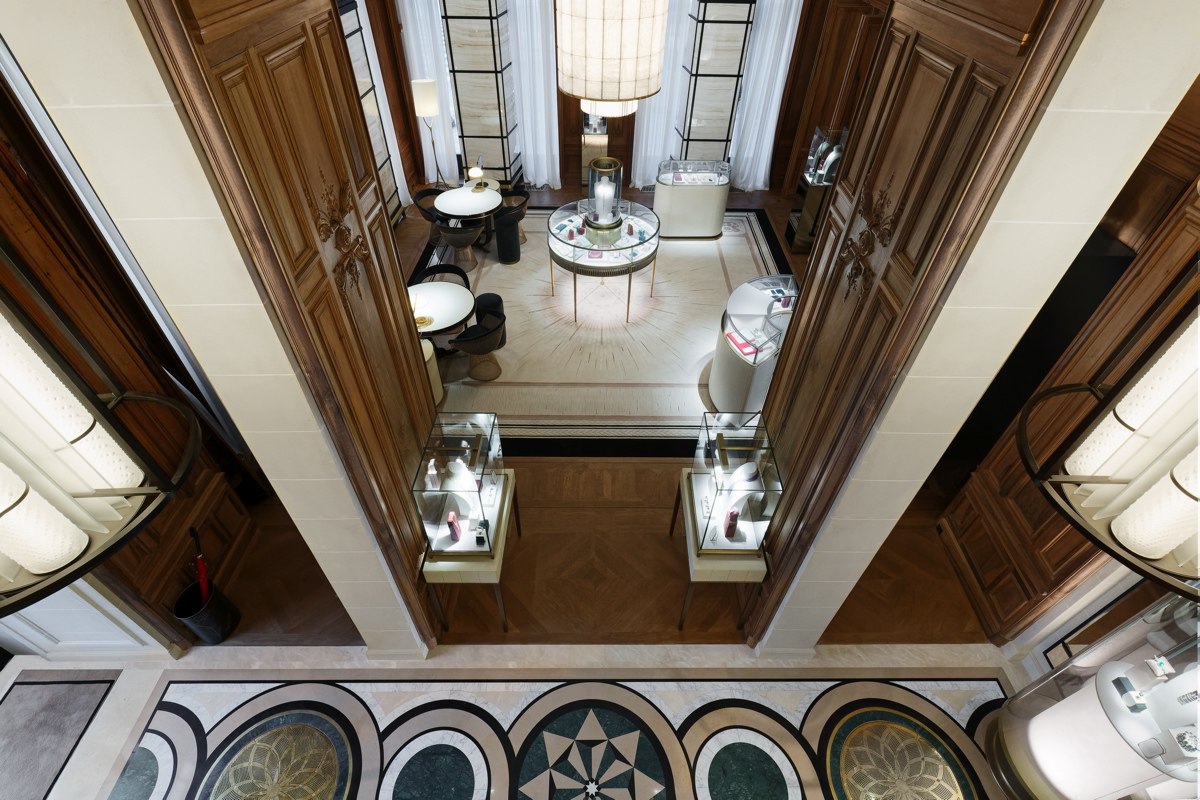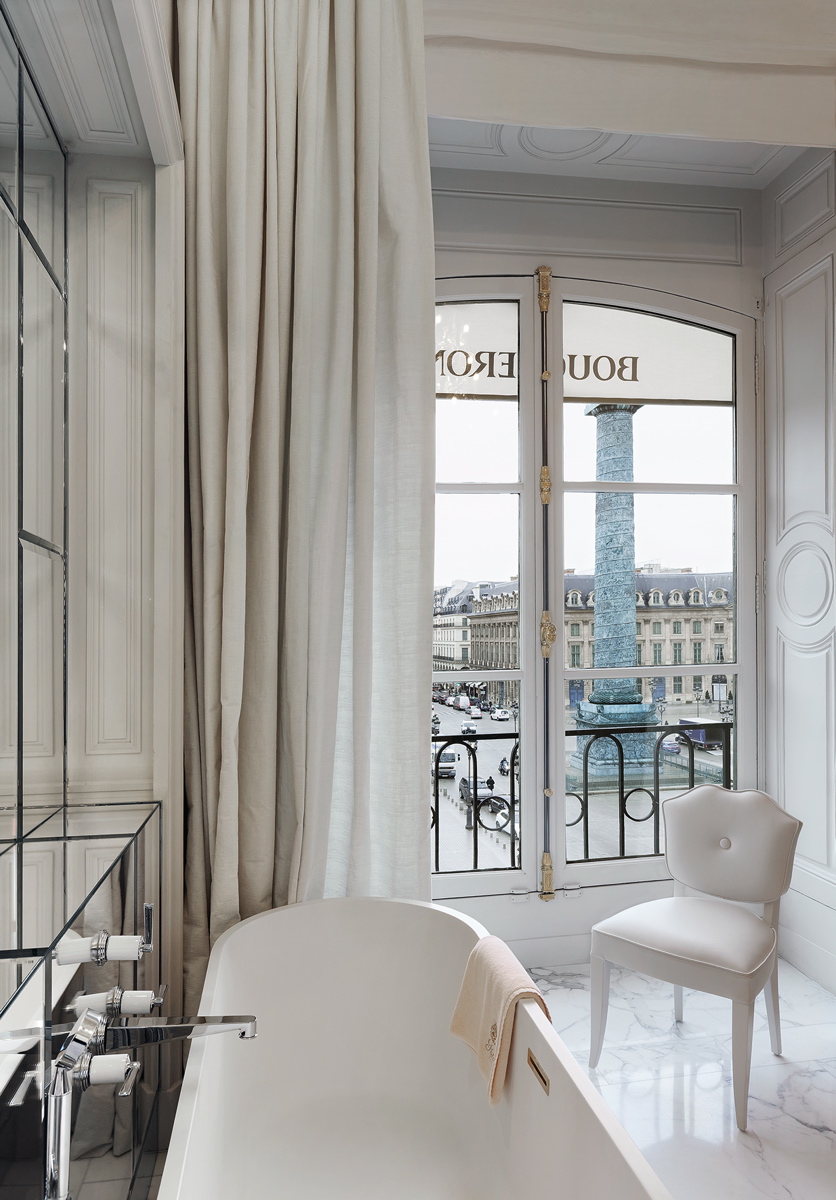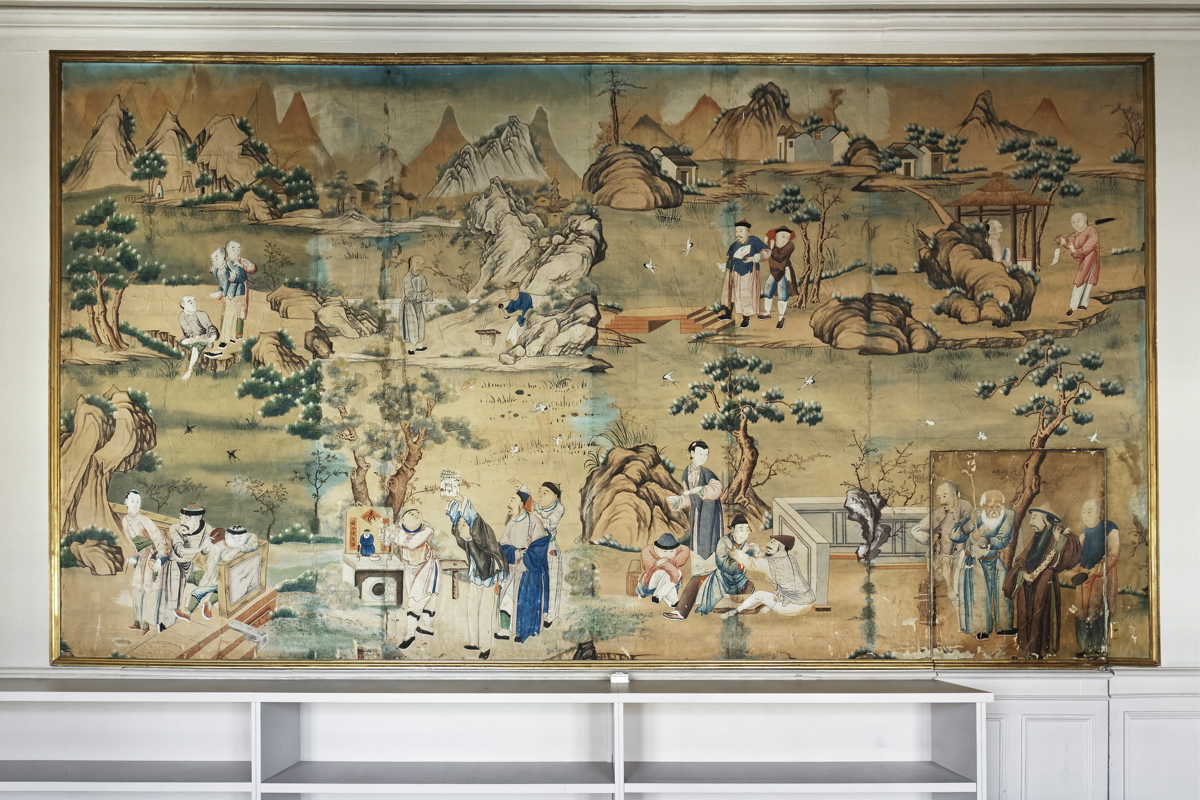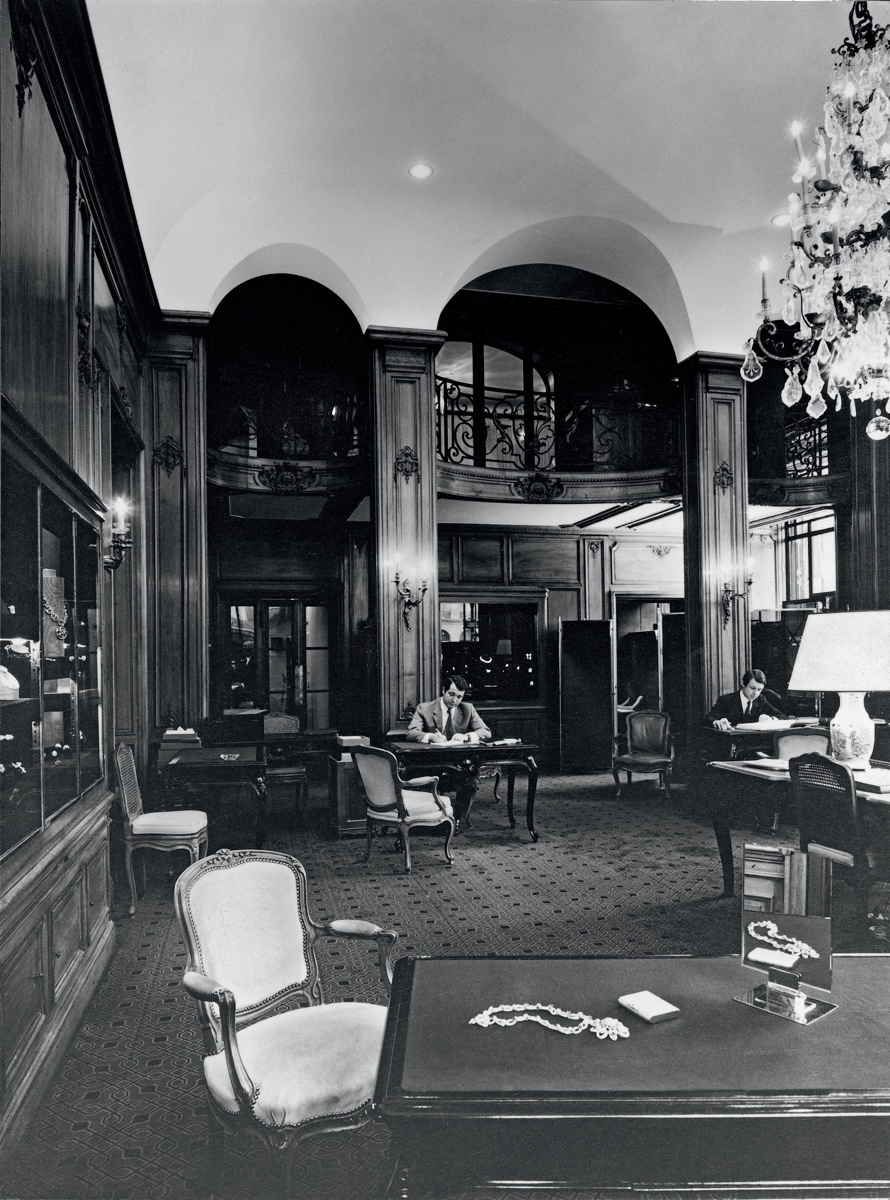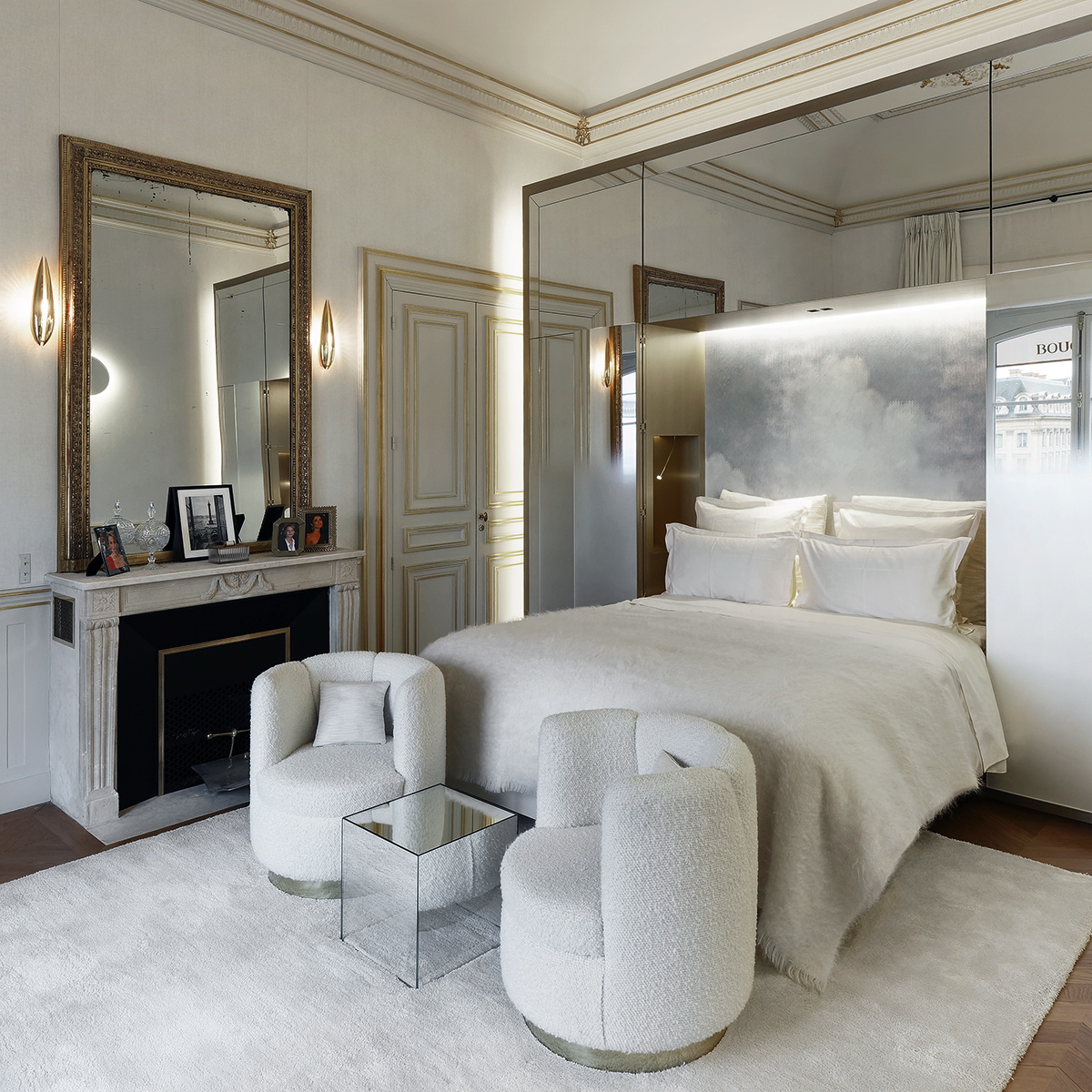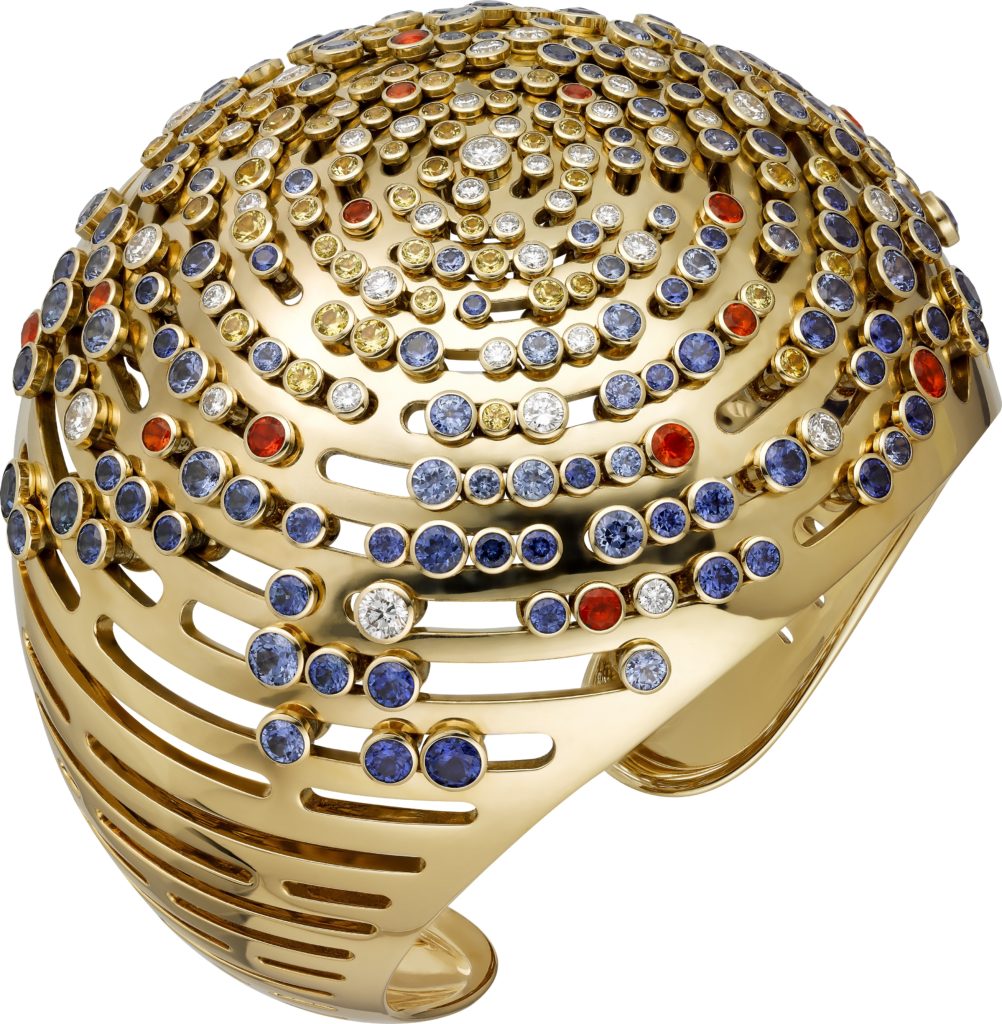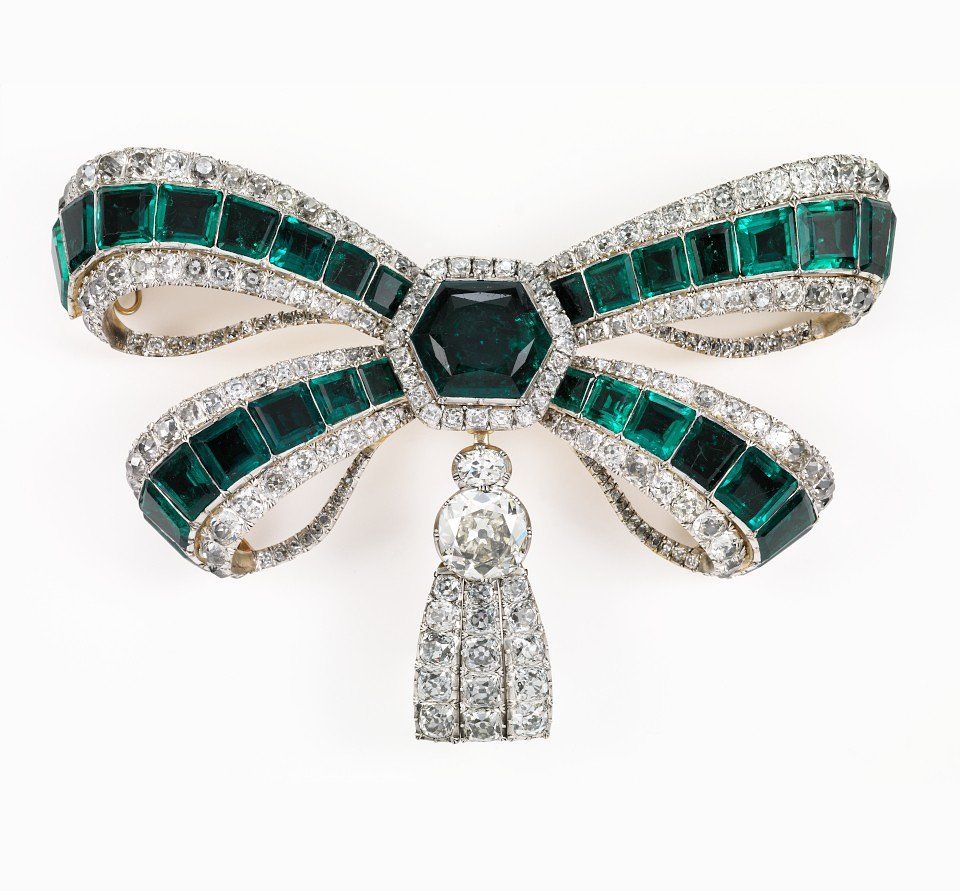If you cannot locate the Hôtel de Nocé at first glance, its address will tell you everything about it. Elegantly built at 26 Place Vendôme, it is the luminous showcase of the House of Boucheron. Recently reopened in its entirety, it took two years of work to restore it to its former glory. An impressive project that required major structural work and the presence of the Chief Architect of Historic Monuments: Mr. Michel Goutal. We met him to better understand the stakes of this restoration.
The Hôtel de Nocé in 1914. We can see the Boucheron, Léontine, Linke and Yantorny houses which shared the whole building at the time. The façade of the Boucheron boutique on Place Vendôme is decorated for the arrival of King George V of England and Queen Mary. Photo : Boucheron
1- The Hôtel de Nocé, an eventful history
Initially, the Hôtel de Nocé was built in 1717 for Charles de Nocé who gave it his name. Born in 1662 and died in 1739, he is best known for having been Master of the Guard Robe and then first gentleman of the chamber of Duke Philippe D’Orléans. The hotel was first sold in 1720, then in 1722 and finally in 1760 when Jean Cottin, Director of the Compagnie des Indes bought it. The anecdote is funny when you know the future links that will unite the House of Boucheron to the India of the Maharadjas (I invite you to reread my article on this subject published in InColor). It was also owned for a time by Gaspard Moïse de Fontanieu, one of the promoters of the Place Vendôme. In 1782, it was purchased by the Receiver of Finances of Chalons, Mr. Jean-Baptiste-François Gigot d’Orcy. The man was known to be passionate about entomology and mineralogy. He owned a cabinet of curiosities which made his reputation and he participated in the publication of works thanks to his role as a patron. He even gave his name to the hotel, which is sometimes referred to as the Hôtel d’Orcy. In 1801, the property became the property of the notary Marc Colin. Then in 1814, it was sold to the framer and gilder Marc-Antoine Chaise. It then became a tenement building and had some famous inhabitants such as the Marquis de la Baume, the cabinetmaker François Linke, the bootmaker Yantorny, reputed to be “the most expensive in the world” and even Lucien Guitry, father of Sacha.
Perspective of the first floor salons after restoration. Photo: Boucheron
Among the hotel’s famous tenants was the Countess of Castiglione, also known as Virginia Oldoini. Described as “the most beautiful woman of her century” but unable to bear growing old, she holed up for the last few years of her life in her small flat at 26 Place Vendôme, where she had the windows caulked and the mirrors covered so as not to see her reflection. Only going out at night, she wandered around the square and left the place in 1894. Frédéric Boucheron moved here in 1893 and chose this location for its maximum sunlight, which illuminated the jewellery in the windows. He was the first jeweller to choose the Place Vendôme and inaugurated the jewellery tradition of the district.
Stage of the restoration of the ceilings of the Hôtel de Nocé with the Atelier Del Boca. Video : Boucheron
In 2016, the Kering group (formerly PPR) became the full owner. The Boucheron boutique closed its doors, the façade was covered with a gigantic tree, and the company’s production workshop moved to rue de la paix. Work can begin.
In the Hôtel de Nocé, when Boucheron occupied the first floor, around 1900/1910. Photo: Boucheron
2- A massive restructuring
The aim of the restoration of the Hôtel de Nocé was to return it to its original configuration. But this was not necessarily easy, as the oldest description dates from 1760 and the building had already been extensively modified. It is known that at that time it had an extension with several stables and a large main building surrounding the inner courtyard. The ground floor and the mezzanine floor were used for kitchens and outbuildings at that time. The first floor housed a large flat, an anteroom, two bedrooms and the library. The second floor, already partially “entresolated”, has a similar configuration. An important constraint was added: the building has been classified as a historical monument since 1930. It was therefore necessary to detail 300 years of successive alterations to find the initial volumes and understand how they had been modified over the centuries. It was at this point that Michel Goutal and his team came into play.
Relaxing while admiring the Vendôme column is now possible with the creation of the Apartment on the second floor of the Hôtel de Nocé. Photo : Boucheron
But before entering the Hôtel de Nocé, a look at the façade is in order. Did you know that under the PLU (Plan Local d’Urbanisme) the Boucheron boutique’s facades are classified and as such are difficult or impossible to modify. This means that if the boutique were to leave this location one day, the exterior elements of the house could not be moved unless authorised by the ABF (Architecte des Bâtiments de France).
Discovering the Chinese Room on the first floor of the Boucheron house. Entirely restored as part of the work on the 26th, it has now been restored to its full splendour. Video : Boucheron
It is now time to enter the premises. Now try to imagine what a private mansion transformed into an investment property after the French Revolution might look like… It is important to remember that at that time, the objective was to house people. Therefore, partitions were built and entresols were installed wherever possible. This made it possible to create extremely low ceilings, but also storage space and sheds. Gone are the 5.20m ceilings and hello to rooms where the lowest ceilings are barely 2.10m. In the same way, the grand staircase of the hotel will be largely modified in its upper part. It is being reduced in order to increase the living space on some of the levels it serves. The objective of the renovation was therefore quite clear: to recover the spirit of the 1893 boutique while at the same time restoring as much as possible of the original volumes of the building. Most of the work consisted of removing the additional volumes installed in the 1980s. Between the removal of the mezzanine floors, the false ceilings and various partitions, almost 200m² was removed from the structure.
The library on the second floor houses some of Boucheron’s archives. The Chinese wallpaper on the right was rediscovered during the restoration and restored by the Atelier Mériguet-Carrère. Photo: Boucheron
The restoration of the premises has made it possible to restore some of the remaining elements of the building. Although they are very few in number, some window frames, the floors and the main staircase remain intact. In renovating 26 Place Vendôme, Boucheron wanted to recreate a family home. The only thing missing is the cat purring by the fire, a reminder that Gerard Boucheron’s own cat, Wladimir, was at home here for many years.
View of the Chinese wallpaper on the second floor restored by the Atelier Mériguet-Carrère. Photo : Boucheron
This restructuring required the presence of specialised workshops often possessing rare know-how and significant experience of so-called “historic” sites. Examples include the Atelier Del Boca for the ceilings and plasterwork, the Atelier Mériguet-Carrère for the restoration of the paintings in the Chinese salon, the family firm Delisle for the lights and chandeliers, and Béatrice Racine – a wallpaper restorer – who restored the 18th-century Chinese wallpapers rediscovered in the flat’s library.
The salons on the first floor have become spaces for receiving the house’s guests. One of them now houses a bridal area for future brides and grooms. Photo: Boucheron
The result is quite impressive and the place has regained its original majesty. The gilding brings an incredible shine to the different rooms and the woodwork has been restored to its natural colours. Finally, the renovation has brought in the outside light by removing unnecessary surfaces. The shop and the various levels are once again radiant, which would certainly not have displeased Frédéric Boucheron.
In the heart of the Boucheron boutique, around 1980. The famous entresol, installed to divide the boutique, is clearly visible. Photo: Boucheron
3- A night in the heart of Place Vendôme
With the creation of the Apartment on the second floor, Boucheron is inaugurating a new customer experience in the jewellery sector and is offering its best customers the opportunity to enjoy a privileged stay in the boutique. In partnership with the Ritz Paris, it is a hotel experience that is both intimate and luxurious. If the restoration of this level is particularly successful, the contemporary decoration by the decorator Pierre-Yves Rochon is soft, subtle but also daring with some extremely sharp choices: a table by Franck Chartrain, a work by the feather artist Émilie Moutard-Martin, a sofa by Noé Duchaufour-Lawrence or wallpapers by Pierre Frey.
A night in the Boucheron Apartment. Photo: Boucheron
Everything here reminds us that luxury is above all a fragile blend of rarity and savoir-faire. But above all, it can be beautiful without being flashy, it can be inspiring without overdoing it. Here the equation, mastered, works ideally. So we hope you will have the chance to discover this place because it really deserves to be seen. So watch out for the Heritage Days, perhaps the Hôtel de Nocé will be on the list and above all, dare to push open the doors of 26 place Vendôme because the new boutique is a place to know, from now on, absolutely!
See you soon!
